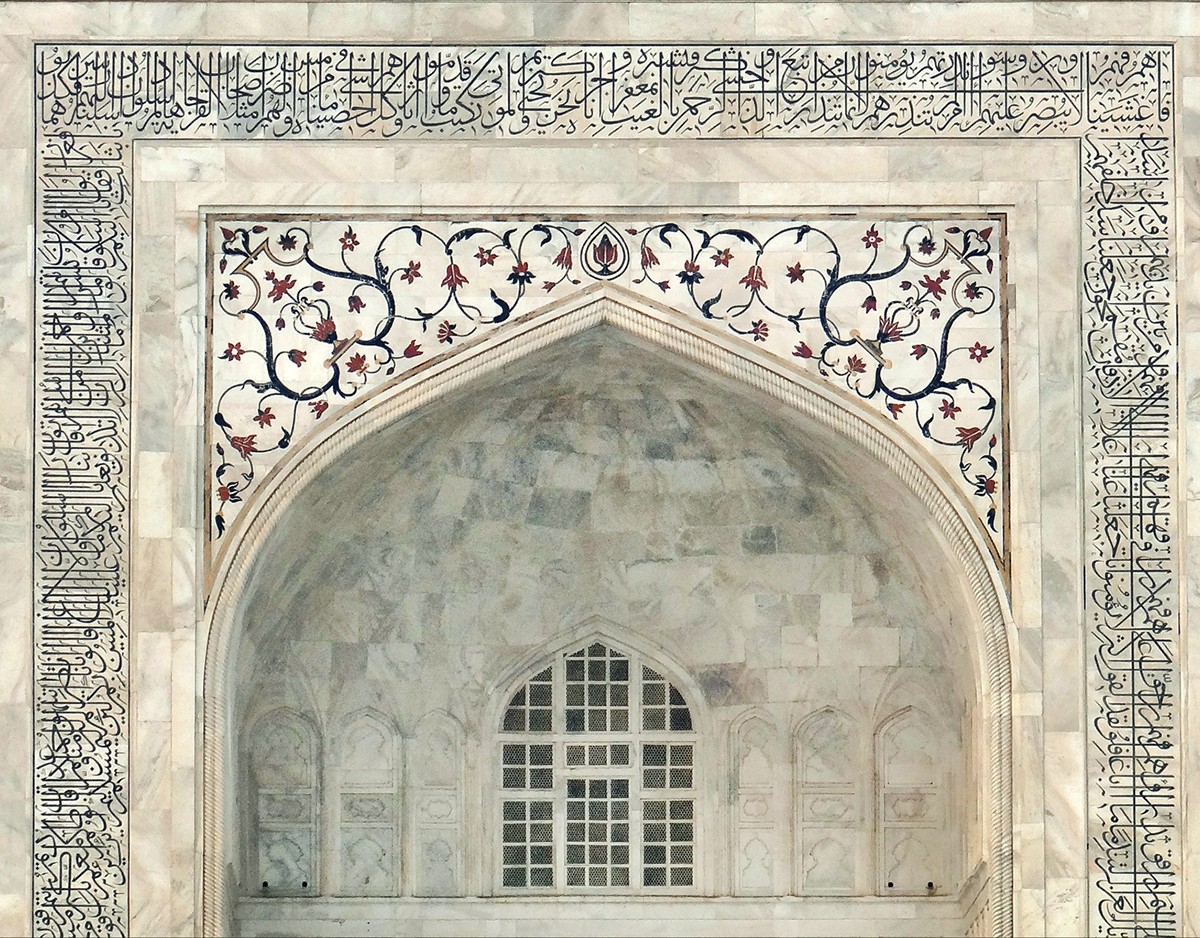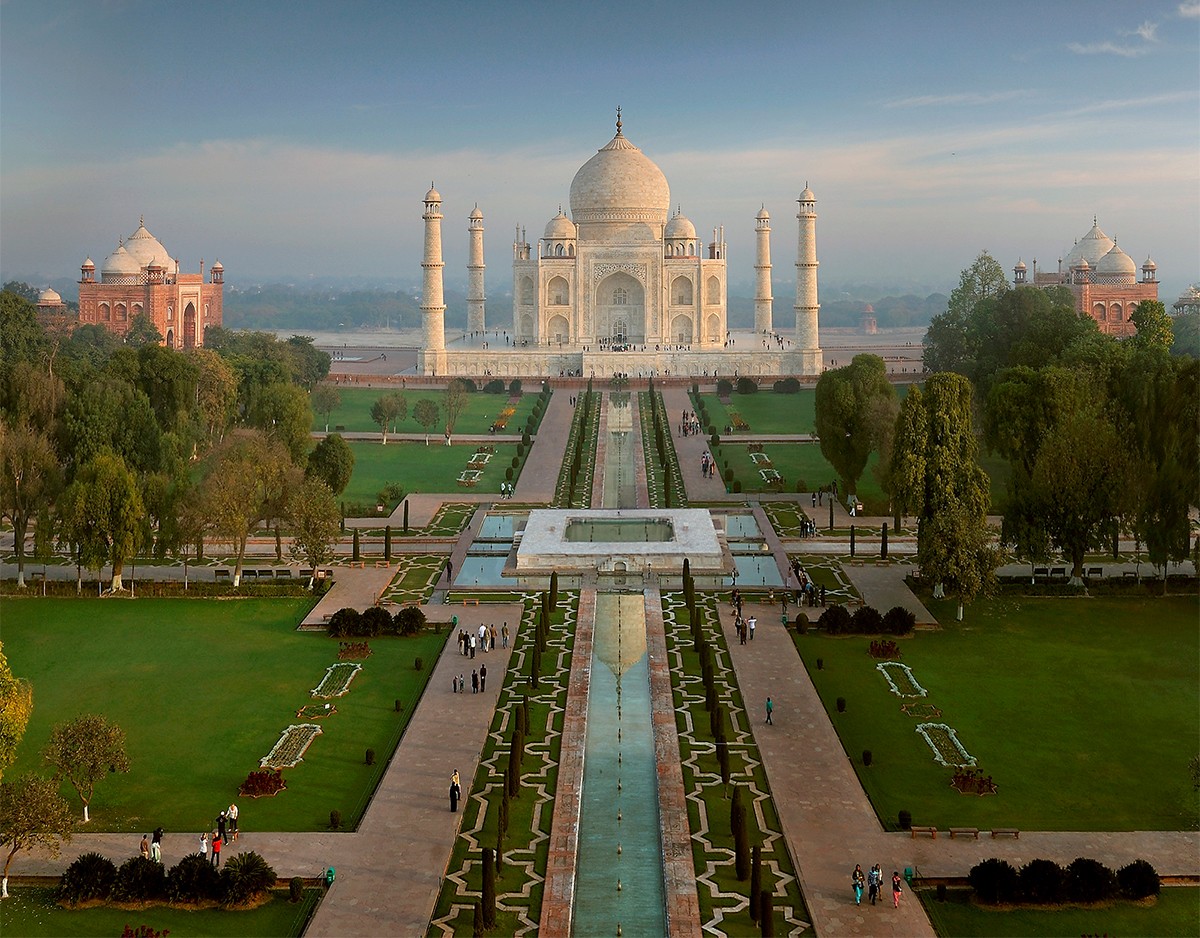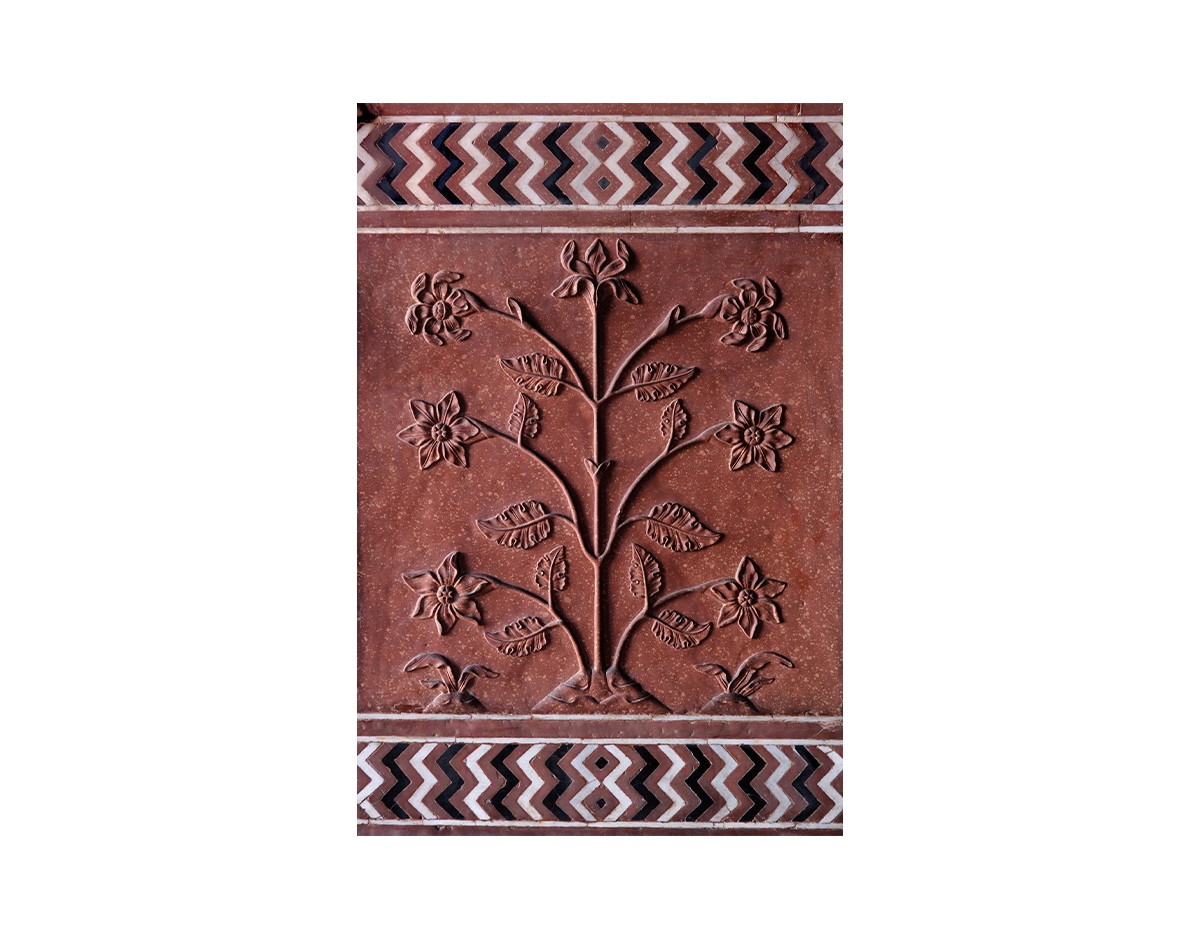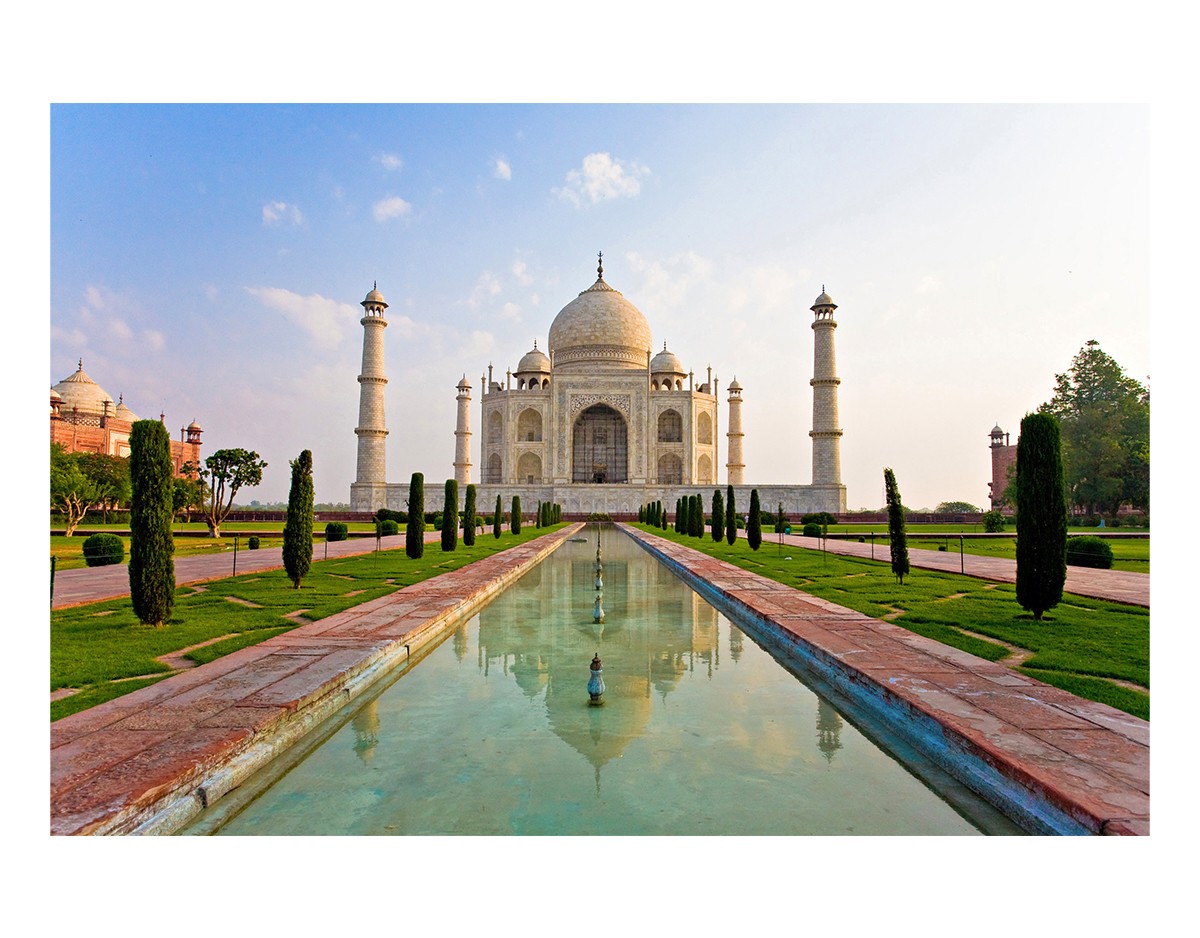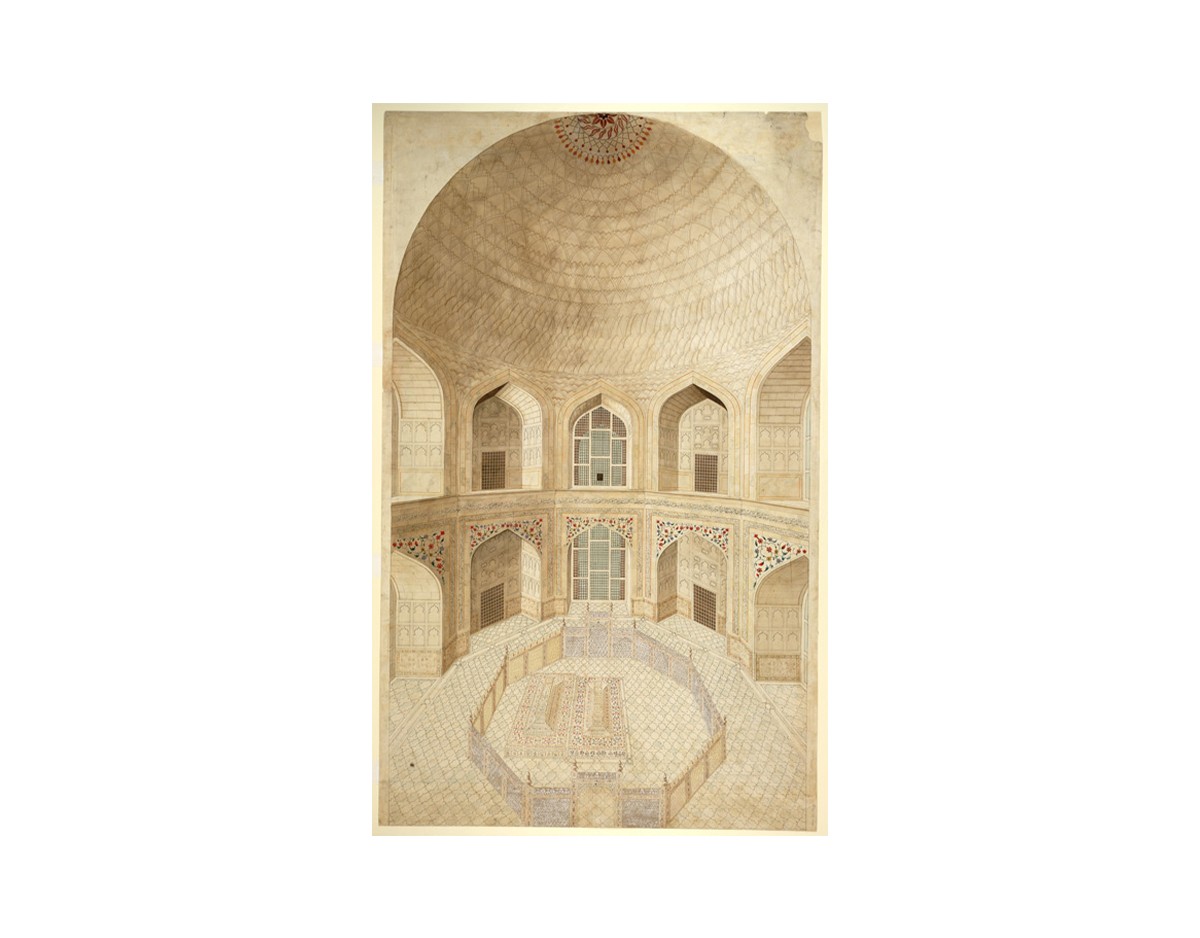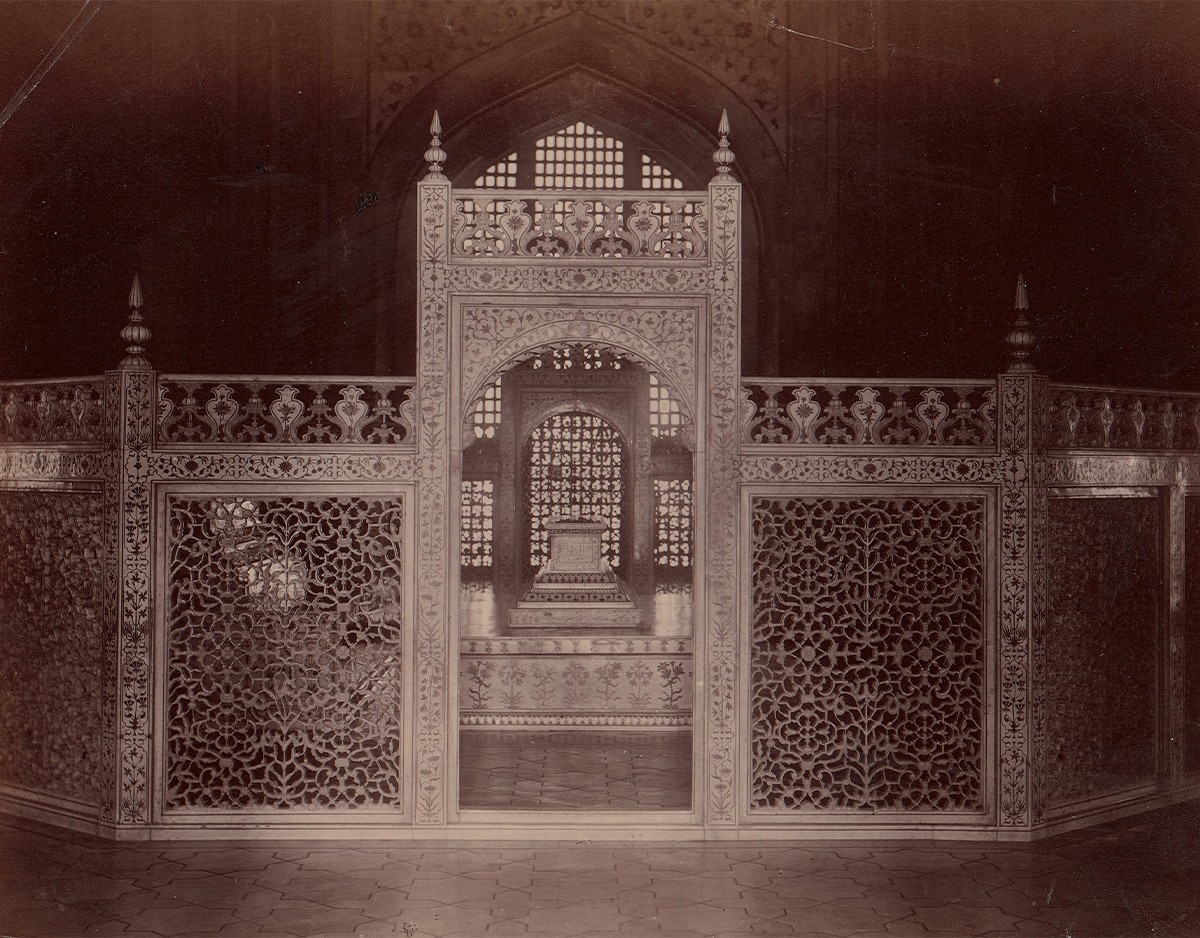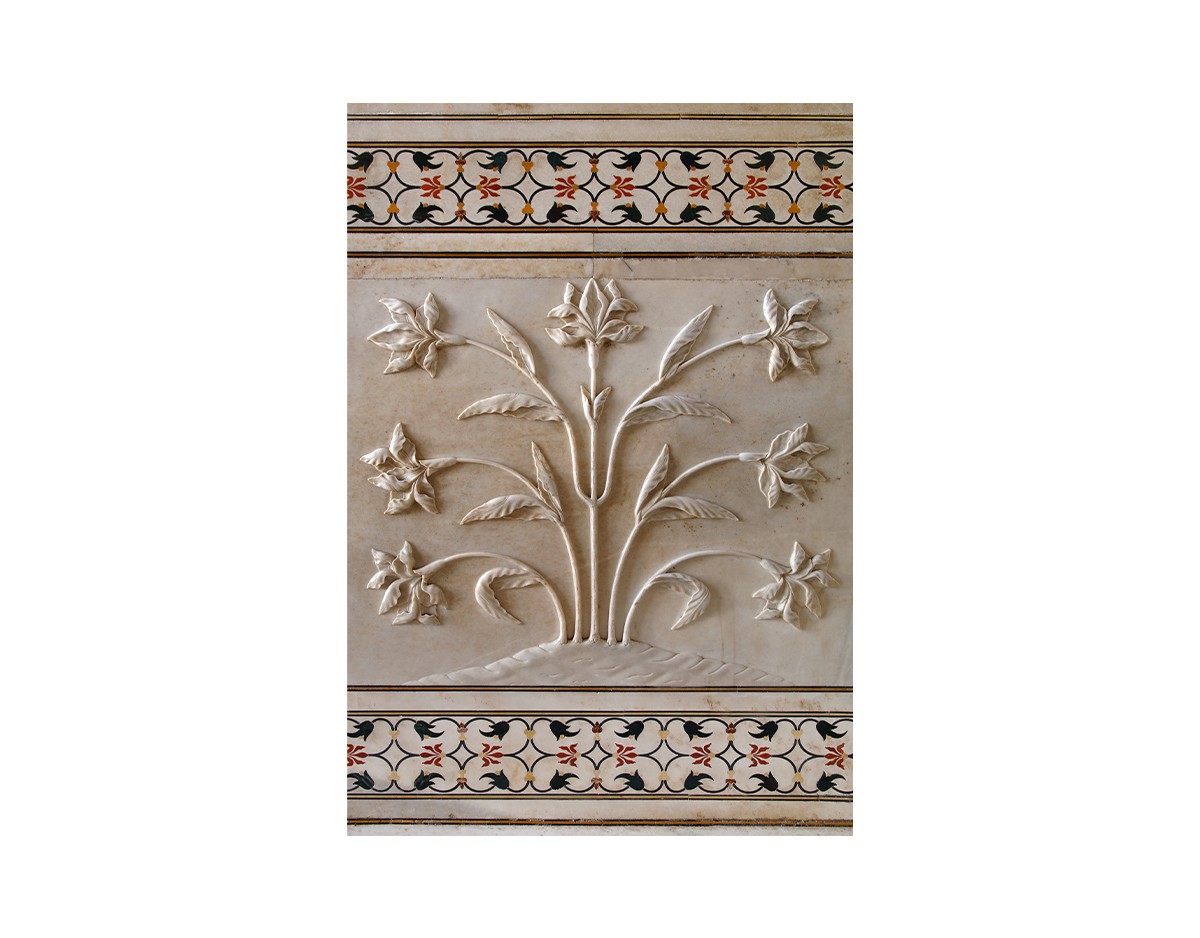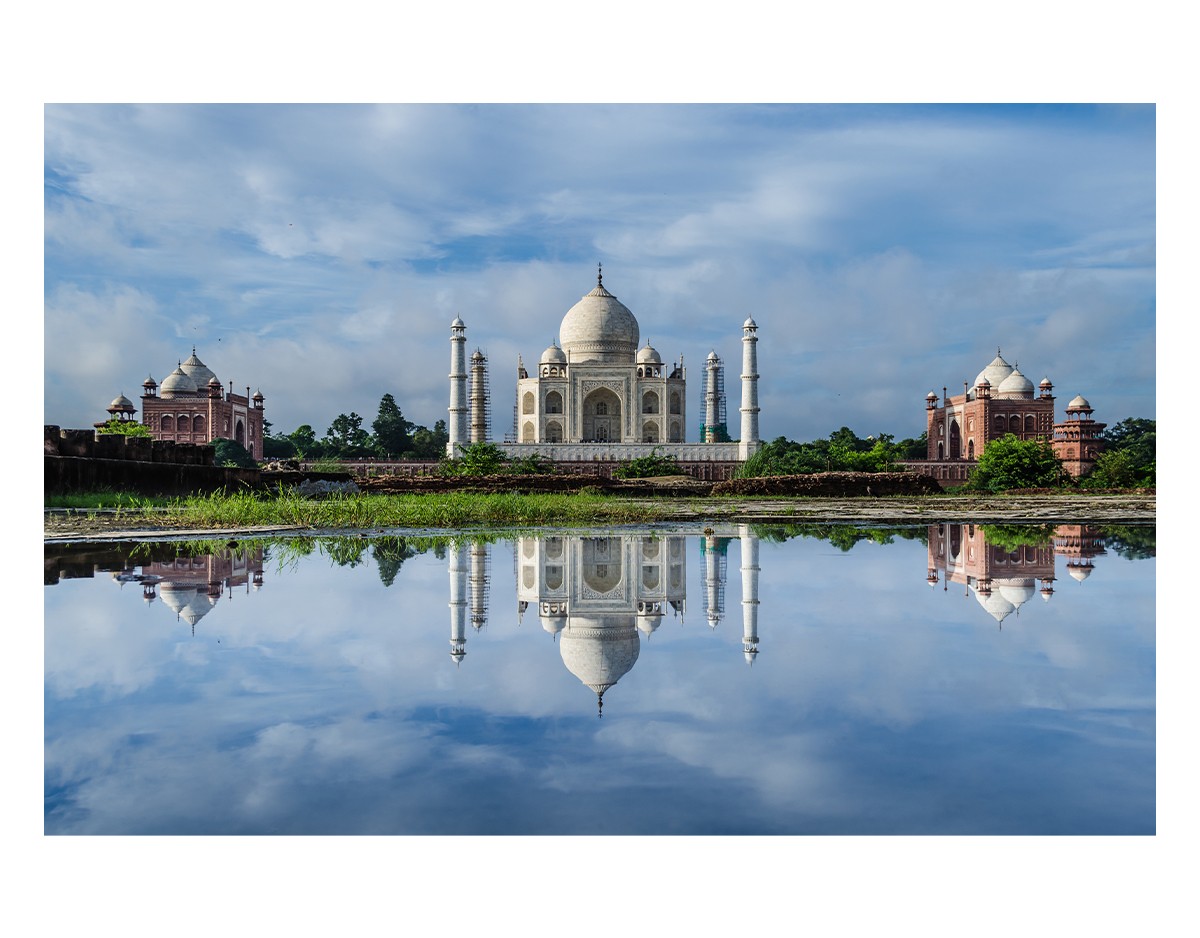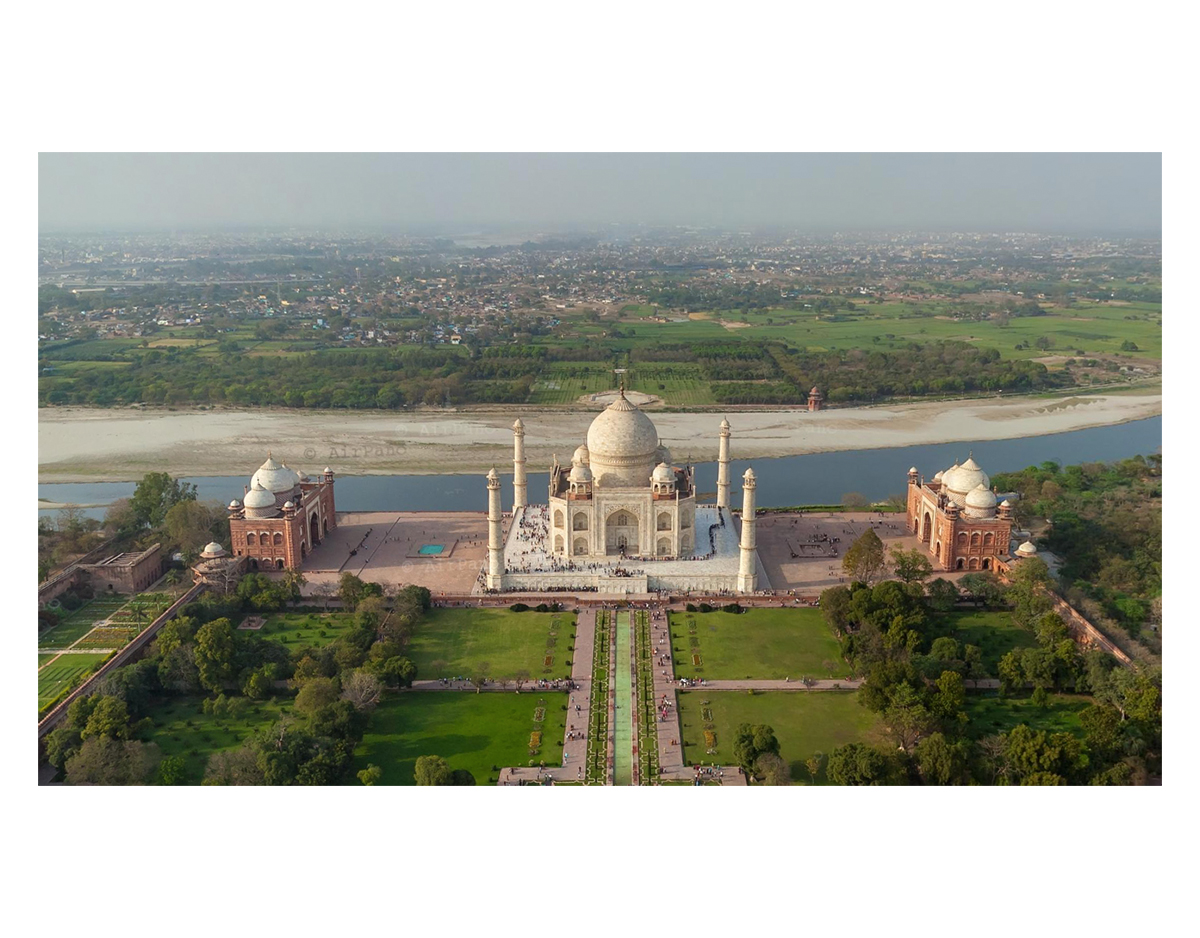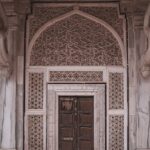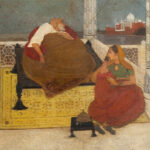The Taj Mahal Is Completed
1636
Mughal emperor Shah Jahan’s mausoleum for his wife Arjumand Banu Begum, popularly known as Mumtaz Mahal, the Taj Mahal is completed after four years of work. Located on the southern bank of the Yamuna river in Agra, India and designed by the emperor himself, it will go on to become one of the world’s most recognisable monuments, known for its white marble exterior, pietra dura inlay and the charbagh garden in the tomb complex.
The layout of the Taj Mahal is likely based on concepts taken from Islamic cosmology and Timurid building conventions. Its garden and waterways are meant to evoke the Quranic Garden of Paradise, while the main tomb structure at the northern end is derived from the Sufi interpretation of arsh (the Throne of God) placed at the head of the garden. This layout is particularly unusual for Islamic tomb complexes, in which the main mausoleum is usually in the centre of the garden.
Unlike most monuments in the subcontinent, the identities of a few artisans involved in the construction of the Taj Mahal are known today. Apart from Shah Jahan himself, scholars have identified two other potential architects — Ustad Ahmad Lahori, who would later design the Red Fort and other structures in Shahjahanabad, and Mir Abd-ul Karim, who was particularly favoured by Shah Jahan’s father Jahangir.
The Taj Mahal will come to occupy a place of pride in the Indian freedom struggle as an example of the architectural grandeur of pre-colonial South Asia, and with this, become the subject of associated writing and art, such as Abanindranath Tagore’s painting The Passing of Shah Jahan (1902).
Its fame will become inextricable from myths and wild speculation, such as the apocryphal claim that after the structure was built, Shah Jahan ordered the hands of the labourers to be cut off so that they would be unable to repeat the feat. Another myth, based largely on conjecture, is about Shah Jahan’s plans to build another Taj Mahal in black stone across the Yamuna as a tomb for himself. A 1989 theory particularly popular among Hindu nationalists states that the Taj Mahal is built on the remains of a Shiva temple called Tejo Mahalaya, but this has also been dismissed by scholars.
Bibliography
Ahmed, Hilal. “Secularising the ‘Secular’: Monumentalisation of the Taj Mahal in Postcolonial India.” Economic and Political Weekly, 48, no. 50 (2013): 71–78. https://www.jstor.org/stable/24479048.
Asher, Catherine. The New Cambridge History of India: Architecture of Mughal India. Cambridge, UK: Cambridge University Press, 2008.
Kavuri-Bauer, Santhi. Monumental Matters: The Power, Subjectivity, and Space of India’s Mughal Architecture. Durham: Duke University Press, 2011.
Malhotra, Raghu. “Explained: The Persistent Theory that Taj Mahal was a Hindu Temple Called ‘Tejo Mahalaya.” Indian Express, May 15, 2022. Accessed June 21, 2022. https://indianexpress.com/article/explained/taj-mahal-controversy-hindu-temple-tejo-mahalaya-7916684/.
Mehta, Archit. “Fact-Check: Did Shah Jahan Chop off the Hands of Taj Mahal Workers?” The Wire, December 24, 2021. Accessed August 13, 2022. https://thewire.in/politics/fact-check-did-shah-jahan-chop-off-the-hands-of-taj-mahal-workers.
Feedback 
This entry appears in
Art in South Asia
Visit Timeline
Associated Timeline Events
First Published: March 11, 2024
Last Updated: May 20, 2024



